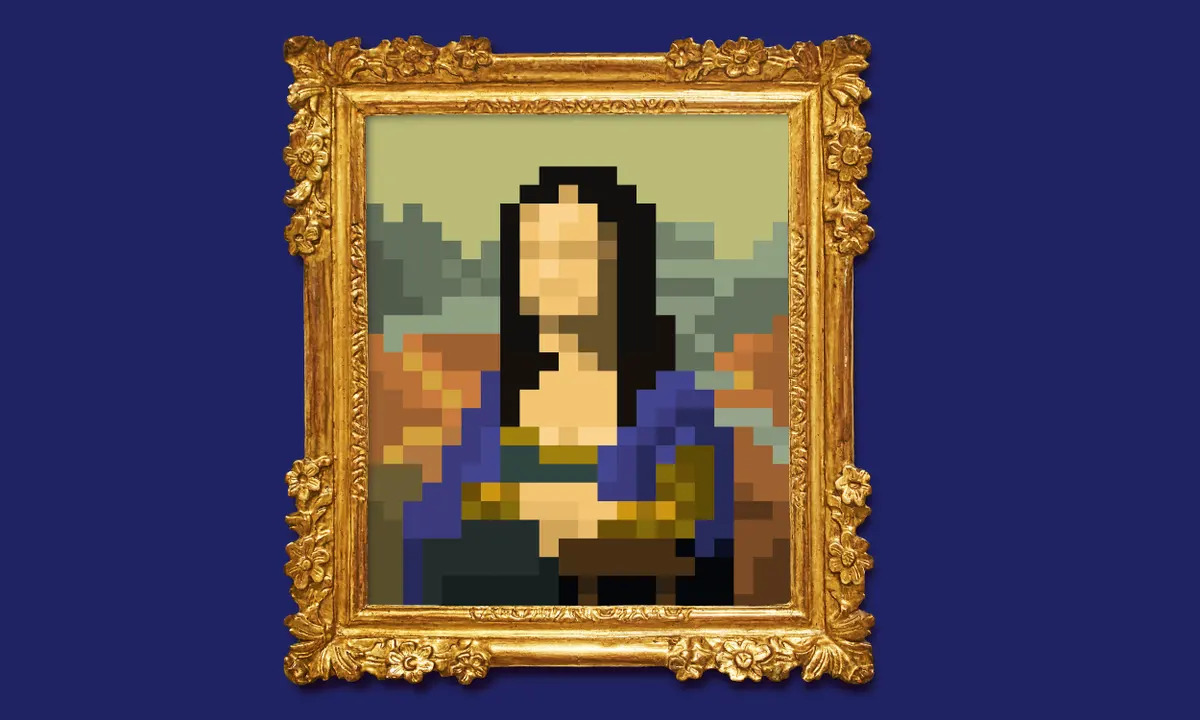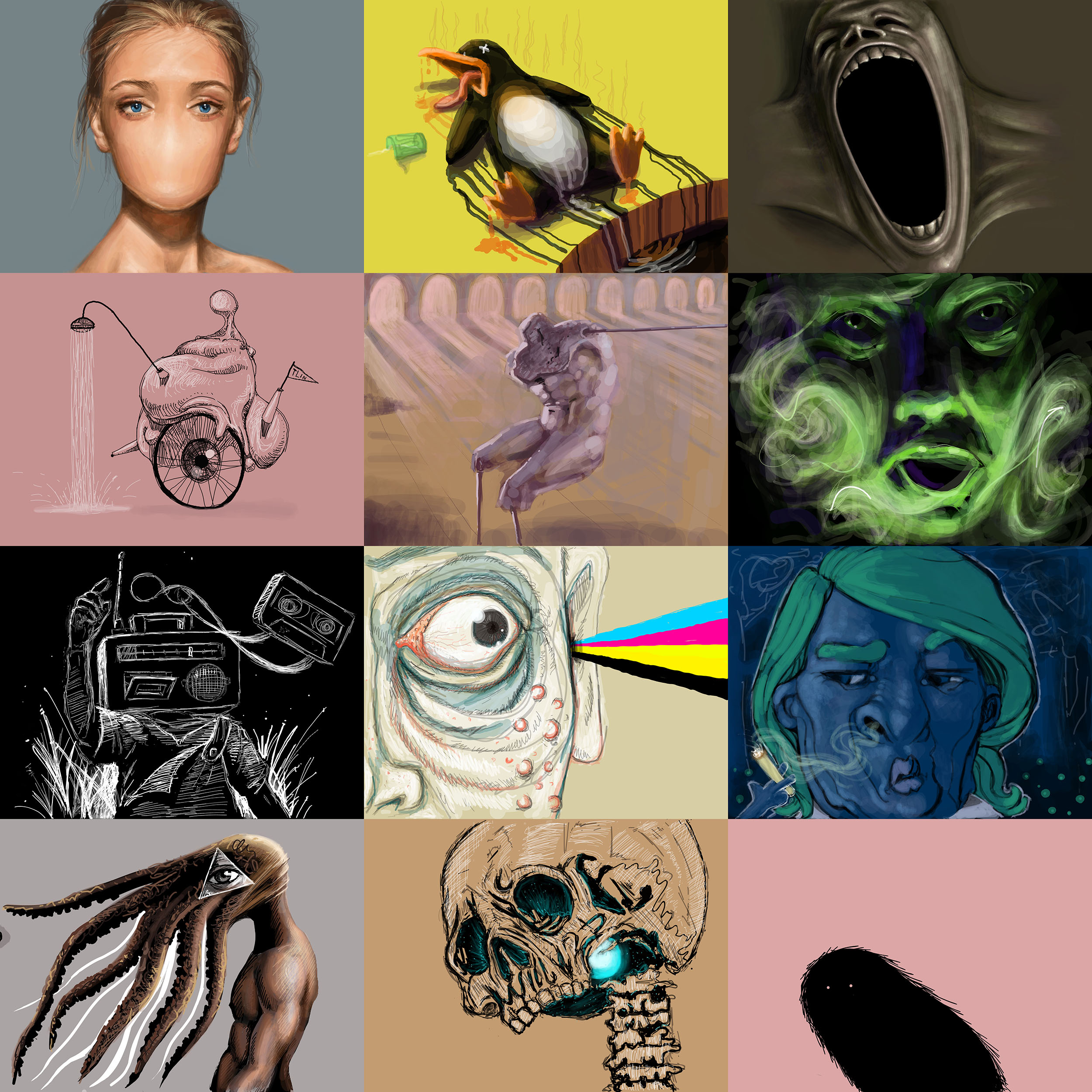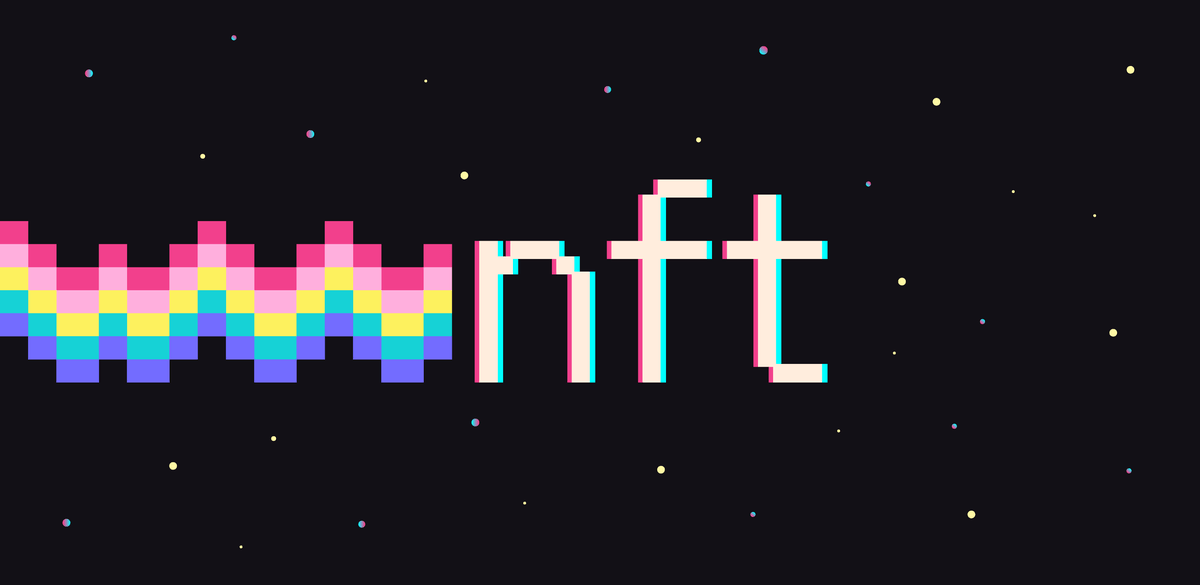What's The Role Of NFTs In Digital Art?
Explore how NFTs in digital art are transforming the creative landscape, offering artists unprecedented control over their work, ensuring authenticity, and opening global markets for unique digital creations.
Author:Camilo WoodReviewer:James PierceFeb 09, 2024535 Shares18.4K Views

Although the buzz around Non-Fungible Tokens (NFTs) comes and goes, there is always something signaling a seismic shift in how we perceive and interact with digital art.
NFTs in digital art, stands at the intersection of technology and creativity, ushering a new era for artists and collectors alike, redefining notions of ownership, value, and authenticity in the digital realm.
What Are NFTs?
At its core, an NFT is a digital asset, unique and non-interchangeable, powered by blockchain technology. Unlike cryptocurrencies such as Bitcoin, which are fungible, meaning each unit is the same as every other unit, NFTs are one-of-a-kind. They can represent anything digital, from artwork and music to memes and videos, providing a certificate of ownership and provenance that is secure and verifiable.
The Impact Of NFTs On Digital Art
So what's the impact of NFTs on digital art?
1. Ownership And Authenticity
For creators, the advent of NFTs has solved a longstanding dilemma: how to claim ownership of something inherently duplicable. With NFTs, digital artists can mint their work on the blockchain, granting them indisputable proof of authorship and ownership. This development not only secures artists' rights but also adds a layer of authenticity to digital art, elevating its value in the eyes of collectors.
2. A New Avenue For Income
NFTs have opened up novel revenue streams for digital artists, allowing them to monetize their work more directly and efficiently. Through blockchain, artists can sell their work globally without the need for intermediaries, such as galleries or agents, and can even earn royalties from secondary sales. This democratization of the art market empowers creators and challenges traditional art world hierarchies.
3. Global Reach And Inclusivity
The NFT marketplace is inherently borderless, enabling artists from all corners of the globe to access a worldwide audience. This unprecedented reach has made the art world more inclusive, offering opportunities to creators outside the conventional art hubs. Moreover, the digital nature of NFTs allows for a diversity of expression unmatched in traditional mediums, from 3D animations to digital paintings and beyond.

How To Create An NFT
Creating an NFT (Non-Fungible Token) is a process that bridges creativity with the technological intricacies of blockchain. Here's a step-by-step guide to turning your digital art into an NFT:
- Prepare Your Digital Artwork- The first step is creating or selecting the piece of art you want to tokenize. This can be anything digital - a painting, a photograph, a meme, a GIF, or even a piece of music.
- Choose a Blockchain -Ethereum is the most popular blockchain service for creating NFTs due to its widespread adoption and robust infrastructure. However, alternatives like Binance Smart Chain, Flow by Dapper Labs, and Tezos offer lower transaction fees and energy consumption, which might be preferable depending on your priorities.
- Set Up a Digital Wallet- To interact with the blockchain and NFT marketplaces, you'll need a digital wallet that supports cryptocurrency. MetaMask, Coinbase Wallet, and Trust Wallet are popular choices that can store Ethereum and other cryptocurrencies used to pay for transactions.
- Add Cryptocurrency to Your Wallet- You'll need cryptocurrency, like Ether (ETH) if you're using the Ethereum blockchain, to pay for the transaction fees associated with minting an NFT. You can purchase cryptocurrency through exchanges like Coinbase, Binance, or Kraken, and then transfer it to your digital wallet.
- Choose an NFT Marketplace- Several platforms allow you to mint and sell NFTs, including OpenSea, Rarible, and Mintable. Each platform has its own process for uploading your art and turning it into an NFT, but generally, you'll need to connect your digital wallet and follow the site's instructions for creating a new NFT.
- Mint Your NFT- "Minting" is the act of publishing your unique digital art on the blockchain, making it into an NFT. During this process, you'll decide on the specifics of your NFT, such as whether it will be a one-of-a-kind piece or part of a limited series. You'll also have the opportunity to embed royalties into your NFT, ensuring you receive a percentage of sales whenever your art is sold on the secondary market.
- List It for Sale- Once your NFT is minted, you can list it for sale on the marketplace. You'll set the price and conditions of the sale, such as whether it will be sold at a fixed price or through an auction.
Creating NFT art involves digitizing a work, whether it's a painting, photograph, or digital creation, and minting it as an NFT on the blockchain. This process assigns a unique identifier to the artwork, ensuring its authenticity and scarcity.
Artists then list their NFTs on specialized marketplaces, such as Rarible, OpenSea, or SuperRare, where collectors can purchase them using cryptocurrency.
Advantages Of NFT Art
NFT art revolutionizes the digital art scene by offering several key advantages over traditional art forms:
Decentralization And Ownership
NFTs are decentralized, meaning they aren't controlled by any single authority. This gives artists direct control over their work, from creation to sale, without needing to go through galleries or agents. Ownership is clear and indisputable, thanks to the blockchain's secure, transparent ledger.
Market Accessibility
With NFTs, artists can reach a global market without the geographical and physical limitations of traditional art sales. Digital marketplaces are open 24/7, allowing buyers from around the world to purchase art anytime, anywhere.
Royalties
A significant advantage of NFTs is the ability to earn royalties. Artists can receive a percentage of sales each time their art is resold on the secondary market. This creates a continuous revenue stream, offering financial benefits long after the initial sale.
Proof Of Authenticity And Scarcity
Blockchain technology provides a tamper-proof record of each NFT's history, ensuring the authenticity and scarcity of digital art. This not only combats counterfeiting but also adds to the art's value by verifying its originality and limited edition.
Innovative Art Forms
NFTs enable new forms of creativity and interaction. Artists can embed multimedia elements, such as animation and music, into their NFTs, pushing the boundaries of traditional art. Additionally, NFTs can evolve over time, change based on external data, or even include interactive components, offering a dynamic experience to collectors.
How To Sell Your NFT Art In 7 Steps
Selling NFT art is a process that involves strategy, marketing, and understanding the digital marketplace. Here's how to get started:
1. Research the Market- Understand what types of NFTs are selling and what collectors are looking for. This can help you position your art effectively.
2. Select the Right Marketplace- Different platforms cater to different audiences and types of NFTs. Research platforms like OpenSea, Rarible, Foundation, and others to find where your work might fit best.
3. Price Your Art- Pricing NFTs can be challenging. Consider starting with a lower price to attract initial buyers or use an auction format to let the market determine the value.
4. Promote Your Work- Utilize social media, online forums, and NFT communities to showcase your art and direct potential buyers to your marketplace listings. Engaging with your audience can increase interest and drive sales.
5. Leverage Rarity and Scarcity- Limited editions and rare items often attract more interest. Consider creating a series with varying levels of rarity to appeal to different collectors.
6. Offer Provenance and Authenticity- Buyers want to know about the artist and the story behind the art. Provide detailed descriptions and background information to add value to your NFT.
7. Follow Up on Sales- Engage with your buyers and the community after a sale. Building a strong relationship with your audience can lead to future sales and commissions.
Controversies And Challenges
Despite their potential, NFTs are not without controversy. Criticisms include the environmental impact of blockchain technology, with concerns about the carbon footprint associated with NFT transactions. Furthermore, the market's volatility and the potential for copyright infringement pose significant challenges. However, ongoing developments in blockchain technology aim to address these issues, promising a more sustainable and secure future for NFTs.
NFTs In Digital Art FAQs
What Are NFTs In Digital Art?
NFTs, or Non-Fungible Tokens, in digital art refer to unique digital assets that represent ownership or proof of authenticity of a piece of digital artwork. These tokens are stored on a blockchain, ensuring that the artwork is one-of-a-kind and cannot be replicated, thus providing a digital certificate of ownership.
How Do NFTs Benefit Digital Artists?
NFTs offer digital artists several benefits, including the ability to assert ownership of their work, secure royalties from secondary sales, and access a global marketplace without intermediaries. This empowers artists with more control over their income and the distribution of their art.
Can Anyone Create An NFT For Digital Art?
Yes, anyone can create an NFT for digital art. The process involves creating a digital piece of art, selecting a blockchain platform to mint the NFT, and then listing it on an NFT marketplace. However, artists should consider the costs associated with minting and selling NFTs, such as transaction and gas fees.
How Do You Buy NFTs In Digital Art?
To buy NFTs in digital art, you'll need a digital wallet that supports cryptocurrency and an account on an NFT marketplace where the art is listed. Once set up, you can browse the marketplace, select an NFT you wish to purchase, and complete the transaction using cryptocurrency.
What Makes NFTs In Digital Art Valuable?
The value of NFTs in digital art is determined by several factors, including the artist's reputation, the artwork's uniqueness, and market demand. Scarcity, provenance, and the emotional connection between the buyer and the artwork also play critical roles in establishing an NFT's value.
Conclusion
The rapid evolution and widespread adoption of NFTs suggest they are more than a passing trend. As digital technology continues to advance, NFTs could become a standard for digital ownership and exchange, transforming not only the art market but also other sectors like gaming, entertainment, and real estate.
The potential for NFTs in digital art foster a more direct and equitable relationship between creators and consumers, heralding a new chapter in the digital revolution.

Camilo Wood
Author

James Pierce
Reviewer
Latest Articles
Popular Articles
